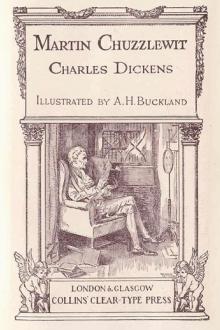Narrative of the Voyage of H.M.S. Rattlesnake, Commanded By the Late Captain Owe - Volume 1, John MacGillivray [read dune txt] 📗

- Author: John MacGillivray
Book online «Narrative of the Voyage of H.M.S. Rattlesnake, Commanded By the Late Captain Owe - Volume 1, John MacGillivray [read dune txt] 📗». Author John MacGillivray
narrow elongated band or vitta, as it is here designated, from which the distinctive sectional appellation is derived. This band or stripe varies in width and proportionate length and position in different species; it is slightly elevated, and marked with larger, or small circular discoid, or acuminated eminences. This subdivision is further distinguished by the situation of the ovicells, which are not terminal, but occur at irregular intervals on cells in the course of the series. They are of the same galeate form as in many others of the Escharinae, but are not as in them placed above the mouth of the cell, but below it in front: and in all cases the shape of the ovicell-bearing cell is much altered from the rest, and in all the vittate species the cell upon which the ovicell is produced arises from its predecessor, not with the intervention of a short tube, but is immediately sessile upon it, by a broad base.
a. Fenestratae.
Cells large, fenestrate in front; ovicells terminal.
1. C. hastata, n. sp. ?
C. bicuspis ? Gray. Dieffenbach's New Zealand, Volume 2 page 293.
Fenestrae, 7 to 9, disposed in a crescent, and with elongated fissures radiating towards them from the median line. Avicularia supporting a large pyramidal pointed hollow process, compressed, and perforated before and behind by five or six small circular pores.
Habitat: Bass Strait, 45 fathoms, dead shells.
Of a yellowish white colour, sometimes reddish. Forms fine bushy tufts, with long wavy branches, arising from a short common stem, and it attains a height of five or six inches. It appears sometimes to be parasitic upon other polyzoa, and is then much smaller. Its peculiar characteristics are the perforated and striated scutiform area on the front of the cell and the perforated, or apparently perforated pyramidal lateral processes above each avicularium; these processes are much developed, and give the cell the form of a broad inverted shear-head. It seems to be an abundant species in Bass Strait, and it occurs also in New Zealand. (Dr. Hooker's Collection.)
2. C. amphora, n. sp.
Cellaria catenulata ? var. B. Lamarck. Anim. sans Vert. Volume 2 page 180 2nd edition.
Cells oval, sides rendered straight upwards by the broad avicularia which are prolonged upwards into an acute spinous angle, and support a shallow cup. Front of cell with nine pyriform fenestrae, with fissures proceeding from their pointed ends towards an oval central perforation. An elevated band, extending from the sides of the mouth to the upper angular processes of the avicularia. An elevated flattened band along the middle of the back, which at the top sends off a narrower lateral band to each avicularian spine.
Habitat: Bass Strait, 45 fathoms.
A fine species of a bright reddish brown, and in the younger cells very transparent. Forms small, irregularly branched bushes, four to six inches high and wide. It is peculiar by its extremely regular vase-like form of cell, which is given by the continuation upwards of the broad avicularia in nearly a straight line, and their prolongation into a sharp angular spine, on the inner side of which is a shallow cup-like cavity, whose sides are usually more horny than calcareous. The number of fenestrae appears to be very constant.
The length of the branches before their dividing, and their straightness, together with the colour of this species, render it not improbable that it is the form intended by Lamarck (l.c.).
3. C. margaritacea, n. sp.
Cellaria vesiculosa ? Lamarck.
Cells oval or sub-globular, much compressed; avicularia short and broad, supporting a deep cup-like cavity. Fenestrae 5, large. Lower margin of mouth notched in the middle; back of cell minutely sulcated; sulci short, interrupted, and irregular. A small lateral area.
Habitat: Swan Island, Banks Strait.
A very beautiful species, the branches resembling strings of minute pearls. The pearly lustre (in the dry state) owing without doubt to the minute sulci on the backs of the cells. These sulci are not, however, consequent upon the drying, because they are equally apparent and constant when the specimen has been immersed in fluid. The species may almost at once be distinguished by the notch in the lower margin of the mouth, which notch represents the central suboral opening present in some other species.
4. C. ventricosa, n. sp. Table 1 figure 1.
Cells oval, compressed, rather wide below; avicularia wide, supporting sometimes a cup-like cavity, sometimes a closed broad conical spine. The prehensile part of the avicularium itself small, seated in a deep notch below the acuminate summit; lateral area large and well defined. Fenestrae 7, with fissures radiating to a rounded central opening. Anterior surface of cell studded with minute acuminate papillae; posterior surface smooth, sometimes spotted.
Habitat: Bass Strait, 45 fathoms.
Colour dirty white or brown. Habit stiff, stem strong, straight, branches short and crowded-probably attains a height of four or five inches. The only other species with which it can be confounded is C. amphora, from which it differs in the greater size and more irregular form of the lateral processes, in the presence of the minute papillae on the surface, and in the absence of the narrow longitudinal band on the back; instead of which the older cells in C. ventricosa exhibit a sort of broad scutum, almost covering the back of the cell and sending off two lateral bands on the sides of the cell, one passing below the avicularium and above the lateral area, and the other towards the acuminated apex of the avicularium. It also wants the raised bands which in C. amphora pass from the sides of the mouth to the apex of the avicularium in front. One large specimen presents a variety worthy of note-in this the backs of all the cells, except one here and there, exhibit (internally ?) numerous irregular-sized leopard-like spots.
5. C. plagiostoma, n. sp.
Cells short-ovoid; avicularia very large and long, ascending from near the bottom of the cell into an acute spinous point, and supporting a deep cupped cavity; mouth placed obliquely; front of cell divided into five large subtriangular fenestrae by four broad bands. Back of cell with a broad central band and two narrower bands branching from it on each side; surface of spaces left uncovered by the bands on the back beset with scattered, long setose spines.
Habitat: Bass Strait, 45 fathoms.
Colour brownish white; habit stiff, branches short. This species is at once recognisable by the peculiar oblique position of the mouth-the enormously developed avicularium usually only on one side of the cell, and by the sculpture of the cell-which appears as if it were swathed with broad tapes or bands. The wide spaces left between the bands in front clearly represent the true nature of the fenestrae of other species. It is the only species furnished with elongated setose spines.
6. C. lorica, n. sp.
Cellaria catenulata ? Lamarck.
Cells elongated rhomboidal, truncated at each end. Fenestrae three, large, the lowest the largest, arranged in a triangle. Mouth very large; avicularia wide and strong; two lateral areae on each side, well developed; surface in front with a few indistinct circular spots around the fenestrae, and behind marked with faint longitudinal striae.
Habitat: Bass Strait, 45 fathoms.
Colour white, transparent. A fine widely branching species, in which the catenulate aspect is more evident to the eye than in almost any other. It is at once recognisable by the rhomboidal scutate form of the cell viewed anteriorly, and, when the back is also viewed, the resemblance of the two aspects to the back, and breastplates of a coat of mail, is very striking. The structure of the lateral processes is more distinctly to be made out in this species than in any other. Each lateral process consists, first, of a deep cup-like cavity above; second, a middle compartment, the avicularium; and third, a third loculament below the avicularium, the wide opening of which is covered in by a convex transparent membrane. The bottom of this loculament appears to be perforated, and it is to be noticed also that there is a small central perforation in the septum separating it from the cavity of the avicularium. Towards the bottom of the cell, on each side, is a well developed lateral area of exactly the same conformation as the sub-avicularian loculament, and like it covered in by a convex transparent membrane. It might be supposed that these cavities were for the purpose of containing air, in order to render the otherwise heavy branches of the polyzoary buoyant. They, at all events, appear to be perfectly empty.
7. C. cribaria, n. sp.
Cells sub-globular, compressed, more or less alate. Avicularia large, without any superior appendage, and prolonged downwards into elevated lateral alae. Anterior surface with numerous small round fenestrae, placed at equal distances apart, and evenly distributed over the surface, the circumferential fenestrae being larger than the rest. A minute central perforation of a crescentic form, the lower lip projecting, and the upper lip, lingulate in the middle, falling behind the lower.
Habitat: Bass Strait? This species also occurs in New Zealand.
Colour brown, loosely branched and several inches high. Distinguished readily by the cribriform aspect of the front of the cell, and by the curiously formed central orifice, and by the absence of any superior appendage to the avicularium.
b. Vittatae.
Cells furnished with a narrow elongated band or vitta on each side, without fenestrae. Ovicells not terminal, galeriform.
8. C. formosa, n. sp.
Cells oval; avicularia large, flat, or cupped above. Vittae elliptical, rather anterior.
Habitat: Swan Island, Banks Strait.
Colour light plumbeous. Parasitic upon C. margaritacea. The cells are the largest of any in the Vittate division, and very regular and uniform in size and outline. The more distinctive characters are taken from the comparatively broad vittae, and the flat or cupped upper surface of the avicularia, which are usually continued downwards into a prominent ridge or ala.
9. C. gibbosa, n. sp.
Cells pyriform, ventricose posteriorly, much attenuated at bottom. Avicularia small, placed in front close to the sides of the mouth, at the base of strong conical pointed processes which project in front, and are connected across the top of the cell by a prominent toothed ridge. Vittae long linear, entirely lateral.
Habitat: Prince of Wales Channel, Torres Strait, 9 fathoms, mud.
Of a dark lead colour, when dry. Forms an elegantly branched bush about two inches high. The gibbous form of the cells, and the peculiar anterior position of the avicularia, at the base of the projecting lateral processes, at once distinguish it from all the other vittate species. The toothed (sometimes entire) ridge extending between the two lateral processes across the top of the cell and overlapping the mouth like a penthouse is also a very peculiar feature.
10. C. elegans, n. sp. Table 1 figure 2.
Cells elongated ovoid; avicularia large and projecting, without any superior appendage; vittae narrow, rather anterior.
Habitat: Bass Strait, 48 fathoms. Port Dalrymple, on stones at low water.
A delicate and beautiful parasitic species; the branches slender and spreading; colour white and very transparent. Cells regular and uniform in size and shape. A very similar if not identical species occurs in Algoa Bay, South Africa, the only difference between them being that the latter is rather larger and has the vittae much longer; in the Australian forms these bands do not reach above the middle of the cell, whilst in the South African they extend as high as the mouth.
11. C. cornuta, n. sp.
Cells oval; avicularia in many cells wholly transformed into long pointed retrocedent spines, on one or both sides, in others into shorter spines or unaltered. Vittae linear,
a. Fenestratae.
Cells large, fenestrate in front; ovicells terminal.
1. C. hastata, n. sp. ?
C. bicuspis ? Gray. Dieffenbach's New Zealand, Volume 2 page 293.
Fenestrae, 7 to 9, disposed in a crescent, and with elongated fissures radiating towards them from the median line. Avicularia supporting a large pyramidal pointed hollow process, compressed, and perforated before and behind by five or six small circular pores.
Habitat: Bass Strait, 45 fathoms, dead shells.
Of a yellowish white colour, sometimes reddish. Forms fine bushy tufts, with long wavy branches, arising from a short common stem, and it attains a height of five or six inches. It appears sometimes to be parasitic upon other polyzoa, and is then much smaller. Its peculiar characteristics are the perforated and striated scutiform area on the front of the cell and the perforated, or apparently perforated pyramidal lateral processes above each avicularium; these processes are much developed, and give the cell the form of a broad inverted shear-head. It seems to be an abundant species in Bass Strait, and it occurs also in New Zealand. (Dr. Hooker's Collection.)
2. C. amphora, n. sp.
Cellaria catenulata ? var. B. Lamarck. Anim. sans Vert. Volume 2 page 180 2nd edition.
Cells oval, sides rendered straight upwards by the broad avicularia which are prolonged upwards into an acute spinous angle, and support a shallow cup. Front of cell with nine pyriform fenestrae, with fissures proceeding from their pointed ends towards an oval central perforation. An elevated band, extending from the sides of the mouth to the upper angular processes of the avicularia. An elevated flattened band along the middle of the back, which at the top sends off a narrower lateral band to each avicularian spine.
Habitat: Bass Strait, 45 fathoms.
A fine species of a bright reddish brown, and in the younger cells very transparent. Forms small, irregularly branched bushes, four to six inches high and wide. It is peculiar by its extremely regular vase-like form of cell, which is given by the continuation upwards of the broad avicularia in nearly a straight line, and their prolongation into a sharp angular spine, on the inner side of which is a shallow cup-like cavity, whose sides are usually more horny than calcareous. The number of fenestrae appears to be very constant.
The length of the branches before their dividing, and their straightness, together with the colour of this species, render it not improbable that it is the form intended by Lamarck (l.c.).
3. C. margaritacea, n. sp.
Cellaria vesiculosa ? Lamarck.
Cells oval or sub-globular, much compressed; avicularia short and broad, supporting a deep cup-like cavity. Fenestrae 5, large. Lower margin of mouth notched in the middle; back of cell minutely sulcated; sulci short, interrupted, and irregular. A small lateral area.
Habitat: Swan Island, Banks Strait.
A very beautiful species, the branches resembling strings of minute pearls. The pearly lustre (in the dry state) owing without doubt to the minute sulci on the backs of the cells. These sulci are not, however, consequent upon the drying, because they are equally apparent and constant when the specimen has been immersed in fluid. The species may almost at once be distinguished by the notch in the lower margin of the mouth, which notch represents the central suboral opening present in some other species.
4. C. ventricosa, n. sp. Table 1 figure 1.
Cells oval, compressed, rather wide below; avicularia wide, supporting sometimes a cup-like cavity, sometimes a closed broad conical spine. The prehensile part of the avicularium itself small, seated in a deep notch below the acuminate summit; lateral area large and well defined. Fenestrae 7, with fissures radiating to a rounded central opening. Anterior surface of cell studded with minute acuminate papillae; posterior surface smooth, sometimes spotted.
Habitat: Bass Strait, 45 fathoms.
Colour dirty white or brown. Habit stiff, stem strong, straight, branches short and crowded-probably attains a height of four or five inches. The only other species with which it can be confounded is C. amphora, from which it differs in the greater size and more irregular form of the lateral processes, in the presence of the minute papillae on the surface, and in the absence of the narrow longitudinal band on the back; instead of which the older cells in C. ventricosa exhibit a sort of broad scutum, almost covering the back of the cell and sending off two lateral bands on the sides of the cell, one passing below the avicularium and above the lateral area, and the other towards the acuminated apex of the avicularium. It also wants the raised bands which in C. amphora pass from the sides of the mouth to the apex of the avicularium in front. One large specimen presents a variety worthy of note-in this the backs of all the cells, except one here and there, exhibit (internally ?) numerous irregular-sized leopard-like spots.
5. C. plagiostoma, n. sp.
Cells short-ovoid; avicularia very large and long, ascending from near the bottom of the cell into an acute spinous point, and supporting a deep cupped cavity; mouth placed obliquely; front of cell divided into five large subtriangular fenestrae by four broad bands. Back of cell with a broad central band and two narrower bands branching from it on each side; surface of spaces left uncovered by the bands on the back beset with scattered, long setose spines.
Habitat: Bass Strait, 45 fathoms.
Colour brownish white; habit stiff, branches short. This species is at once recognisable by the peculiar oblique position of the mouth-the enormously developed avicularium usually only on one side of the cell, and by the sculpture of the cell-which appears as if it were swathed with broad tapes or bands. The wide spaces left between the bands in front clearly represent the true nature of the fenestrae of other species. It is the only species furnished with elongated setose spines.
6. C. lorica, n. sp.
Cellaria catenulata ? Lamarck.
Cells elongated rhomboidal, truncated at each end. Fenestrae three, large, the lowest the largest, arranged in a triangle. Mouth very large; avicularia wide and strong; two lateral areae on each side, well developed; surface in front with a few indistinct circular spots around the fenestrae, and behind marked with faint longitudinal striae.
Habitat: Bass Strait, 45 fathoms.
Colour white, transparent. A fine widely branching species, in which the catenulate aspect is more evident to the eye than in almost any other. It is at once recognisable by the rhomboidal scutate form of the cell viewed anteriorly, and, when the back is also viewed, the resemblance of the two aspects to the back, and breastplates of a coat of mail, is very striking. The structure of the lateral processes is more distinctly to be made out in this species than in any other. Each lateral process consists, first, of a deep cup-like cavity above; second, a middle compartment, the avicularium; and third, a third loculament below the avicularium, the wide opening of which is covered in by a convex transparent membrane. The bottom of this loculament appears to be perforated, and it is to be noticed also that there is a small central perforation in the septum separating it from the cavity of the avicularium. Towards the bottom of the cell, on each side, is a well developed lateral area of exactly the same conformation as the sub-avicularian loculament, and like it covered in by a convex transparent membrane. It might be supposed that these cavities were for the purpose of containing air, in order to render the otherwise heavy branches of the polyzoary buoyant. They, at all events, appear to be perfectly empty.
7. C. cribaria, n. sp.
Cells sub-globular, compressed, more or less alate. Avicularia large, without any superior appendage, and prolonged downwards into elevated lateral alae. Anterior surface with numerous small round fenestrae, placed at equal distances apart, and evenly distributed over the surface, the circumferential fenestrae being larger than the rest. A minute central perforation of a crescentic form, the lower lip projecting, and the upper lip, lingulate in the middle, falling behind the lower.
Habitat: Bass Strait? This species also occurs in New Zealand.
Colour brown, loosely branched and several inches high. Distinguished readily by the cribriform aspect of the front of the cell, and by the curiously formed central orifice, and by the absence of any superior appendage to the avicularium.
b. Vittatae.
Cells furnished with a narrow elongated band or vitta on each side, without fenestrae. Ovicells not terminal, galeriform.
8. C. formosa, n. sp.
Cells oval; avicularia large, flat, or cupped above. Vittae elliptical, rather anterior.
Habitat: Swan Island, Banks Strait.
Colour light plumbeous. Parasitic upon C. margaritacea. The cells are the largest of any in the Vittate division, and very regular and uniform in size and outline. The more distinctive characters are taken from the comparatively broad vittae, and the flat or cupped upper surface of the avicularia, which are usually continued downwards into a prominent ridge or ala.
9. C. gibbosa, n. sp.
Cells pyriform, ventricose posteriorly, much attenuated at bottom. Avicularia small, placed in front close to the sides of the mouth, at the base of strong conical pointed processes which project in front, and are connected across the top of the cell by a prominent toothed ridge. Vittae long linear, entirely lateral.
Habitat: Prince of Wales Channel, Torres Strait, 9 fathoms, mud.
Of a dark lead colour, when dry. Forms an elegantly branched bush about two inches high. The gibbous form of the cells, and the peculiar anterior position of the avicularia, at the base of the projecting lateral processes, at once distinguish it from all the other vittate species. The toothed (sometimes entire) ridge extending between the two lateral processes across the top of the cell and overlapping the mouth like a penthouse is also a very peculiar feature.
10. C. elegans, n. sp. Table 1 figure 2.
Cells elongated ovoid; avicularia large and projecting, without any superior appendage; vittae narrow, rather anterior.
Habitat: Bass Strait, 48 fathoms. Port Dalrymple, on stones at low water.
A delicate and beautiful parasitic species; the branches slender and spreading; colour white and very transparent. Cells regular and uniform in size and shape. A very similar if not identical species occurs in Algoa Bay, South Africa, the only difference between them being that the latter is rather larger and has the vittae much longer; in the Australian forms these bands do not reach above the middle of the cell, whilst in the South African they extend as high as the mouth.
11. C. cornuta, n. sp.
Cells oval; avicularia in many cells wholly transformed into long pointed retrocedent spines, on one or both sides, in others into shorter spines or unaltered. Vittae linear,
Free e-book «Narrative of the Voyage of H.M.S. Rattlesnake, Commanded By the Late Captain Owe - Volume 1, John MacGillivray [read dune txt] 📗» - read online now
Similar e-books:





Comments (0)